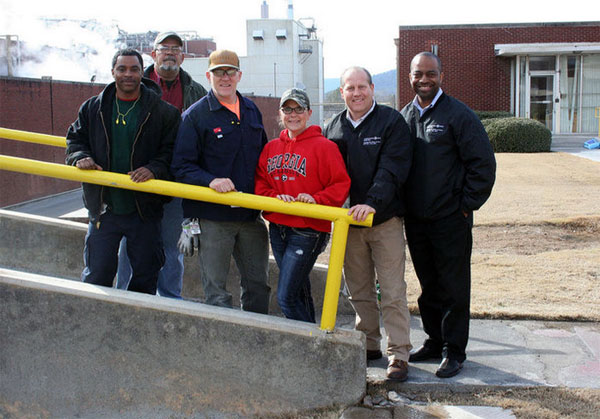IP Transitioning Workforce at Georgia Linerboard Mill
According to an article in this week’s Northwest Georgia News, Rome, Ga., USA, the International Paper linerboard plant in Coosa, Ga., is investing up to $150 million to upgrade technology in the 60-year-old paper mill. At the same time, the company is facing workforce challenges similar to other major industrial manufacturing firms.
The company finds itself in the position of needing to fill as many as 150 maintenance and operations jobs over the course of the next decade as the plant’s longtime workforce experiences a rapid rate of retirements.
"Our turnover is basically from retirement," said Robert Heath, human resources manager at the mill. "It’s been a trickle, but now it’s more than a trickle, it’s big pieces." Heath, by the way, will be retiring this summer.
Mill manager Brant Oberg said that, over the next decade, close to 50 percent of the approximate 350 maintenance and operations employees—more than 150 longtime workers—will be eligible for retirement.
"The maintenance bubble is a little bit ahead of our production bubble," Heath said.
Greg Aaron, learning leader for the maintenance department, said the mill has been reaching out to attract future employees through the media, through contacts with the technical schools, and even into the high schools. "We do have a long-term plan to start looking and trying to motivate folks to go into the maintenance field and production," said Aaron.
Carl Schreier, another human resources officer at the mill, said the company just brought in 17 new employees on January 5 and expects to add that many, or slightly more, at the end of March. Schreir and Oberg said IP has plans to add between 15 and 25 new employees each quarter of 2015 and possibly into 2016.
With the rapid changeover, Heath said new hires are in a better position than some of their predecessors to move quickly up the employment ladder. "A person could come into a mill like this when they were 20 years old, work 30 years, and still be in the middle of the line of progression, because there wasn’t that much movement," Heath said. "Now ... somebody in this class or the next class could be in the top operating job, or a top mechanic, in a very short period of time."
The changed situation has forced a major shift in the way International Paper is training its new hires.
"You can give them knowledge, but what we’re going to miss in the gap is experience," Heath said.
"We’ve got make that experience-gap up."
Heath said that part of the new five-week companywide training program is an integration. The Rome mill has a lot of employees who have never been outside of their own department, he said, but this year’s new hires have visited them all. "They’ve looked at every one of the processes and they have, in some ways, a better foundation than some of the people that have been out here 25 years," Heath said.
Following the training program, each of the new employees goes out into the departments to start a 90-day probationary period. Oberg said the training program is more about the people and how they interact, how they work together, than simply learning to use the equipment.
The Rome mill just celebrated its 60th anniversary. It broke an all-time Rome mill production record during October of last year when it produced a daily average of 2,634 tons of linerboard per day.
"That’s about a mile a minute," said Scott Sauer. Sauer said the mill has an annual capacity to produce about 850,000 tons of linerboard, which is used largely in boxes. "The packaging industry as a whole is tied directly to how the consumer feels about the economy, so it’s a really good pulse for how the economy is doing," Sauer said. "All IP containerboard mills have been given the task of making as many tons as safely as we can, because we’ve got orders for it. It’s good for Rome and good for all of our team members here."
TAPPI
http://www.tappi.org/

